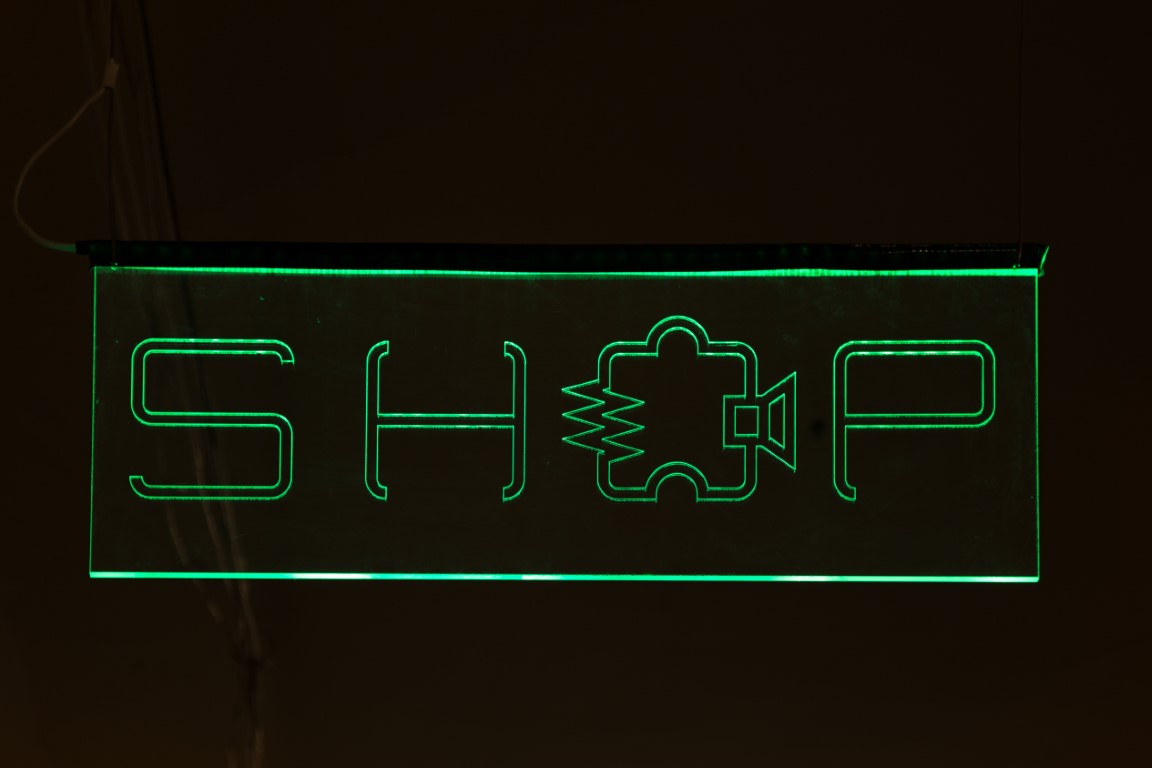
Noisebridge is committed to providing a 24/7 accessible space in San Francisco available to all hackers and makers. They are losing their lease as of August 2018 and are currently fundraising to find a new location.
Two things that most any hackerspace can benefit from are better signage explaining the space, and festive LED decorations.
In preparation for Noisebridge’s 10-year anniversary in 2017 we decided to address both in one project; creating suspended LED signs that identify the work areas of our space in San Francisco. This type of signage is not uncommon, but our extensive installation and our means of keeping costs down led to several requests for a tutorial. You can read more about it at the noisebridge blog, but here’s a quick overview of how we made and installed our 14 suspended, edge-lit LED signs.














